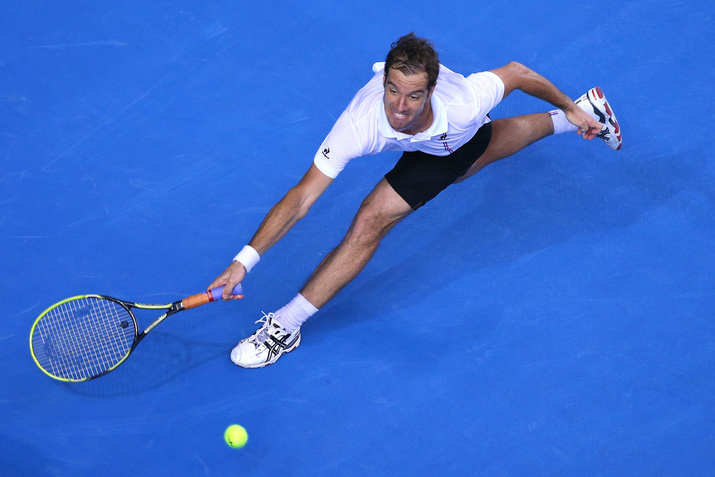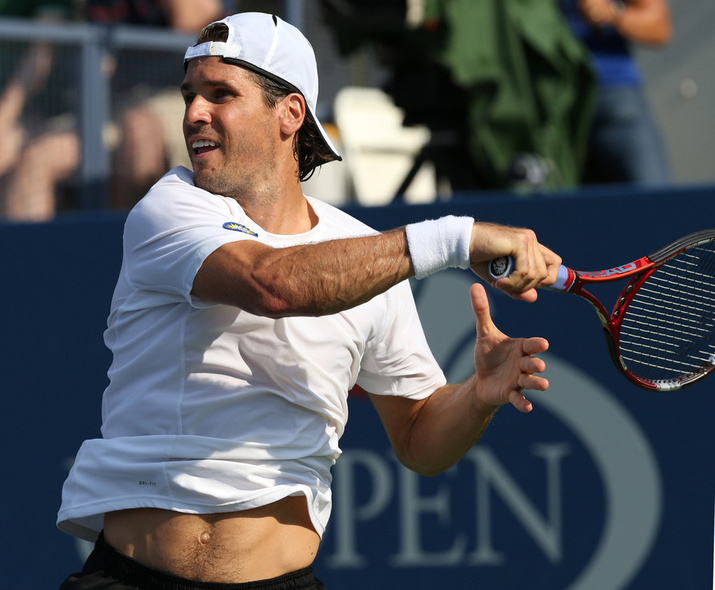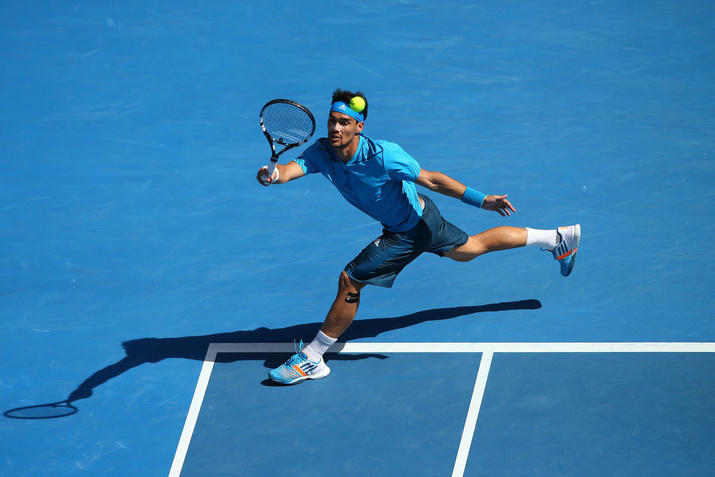Don't miss any stories → Follow Tennis View
FollowThe Week Ahead: Previewing Montpellier, Zagreb, Vina del Mar
Regional roots dictate the schedule of many players during the quieter stretches of the season. Choosing one ATP 250 tournament over another often depends on where they feel closest to home or most at ease. That pattern emerges at the three 250 tournaments held in the week after Davis Cup, where local fans will find plenty of chances to continue cheering along national lines.

A French flavor pervades the Montpellier tournament, unsurprising for a nation arguably deeper than any other in the ATP. This relatively young event will feature 11 Frenchmen among the 24 players who received direct entry in the main draw.
Top half: First among those home hopes is defending champion Richard Gasquet, who likely will not face anyone from another nation until the semifinals. Gasquet’s versatile shot-making has thrived in Montpellier before, and it should serve him well against a pair of net-rushing compatriots in Nicolas Mahut and Julien Benneteau. On the other hand, indoor conditions have witnessed the two finest achievements of Benneteau’s career, both victories over Roger Federer. His opener against inveterate baseliner Nikolay Davydenko should feature an entertaining contrast of styles.
The enigma of Jerzy Janowicz looms above this half almost as notably as Gasquet. An indoor court in France at the Paris Masters 1000 tournament witnessed the Pole’s breakthrough in late 2012, but his results since then have been unpredictable at best. Still, he should outhit most of his early opponents with ease, such as the talented but still raw Roberto Bautista Agut. While Janowicz lost his only previous hard-court meeting with Gasquet, he defeated the world No. 9 in Rome last year.
Bottom half: Plenty of entertaining shot-making should emerge from a section bookended by players who prefer to swing first and think later, if at all. A champion in Montpellier four years ago, Gael Monfils often raises his form a notch on home soil. He may find Australian Open doubles champion Lukasz Kubot an intriguing opening test ahead of a quarterfinal against Dmitry Tursunov. Revitalizing his career around this time last year, Tursunov has reached at least the quarterfinals at four of his last five tournaments on hard courts. That streak will be very much in jeopardy when he faces Denis Istomin, who knocked him off in four sets at the Australian Open. On the other hand, Tursunov defeated Istomin a week before in Sydney.
The tenacious Gilles Simon headlines the weakest quarter of the draw, although serve-volleyer Michael Llodra will try to eke out one more surprise run on home soil. Simon managed to defy what looked like a serious leg injury to win two matches in Melbourne, so his fitness after a series of physical woes will be a key issue to monitor.

Regional ties also play a central role in the field for the Zagreb tournament, where two-thirds of the direct entrants hail from Russia or Eastern Europe. Two of the top three seeds come from a historical foe of that region, however: Germany.
Top half: Hampered by a shoulder injury at the Australian Open, top seed Tommy Haas rebounded to win a doubles match in Davis Cup last weekend. If his health has returned, he should ease through a route filled with other men from northwestern Europe, whether Germany or the Netherlands. One unseeded player to note in his vicinity is Sergiy Stakhovsky, the giant-killer who toppled Federer at Wimbledon last year. That feat has started to become less and less shocking over the last several months, though, and Stakhovsky has done little to build on it. Igor Sijsling certainly has the power to stand toe to toe with Haas, but he has lacked the consistency so far to fulfill his potential.
Another hero of Germany’s victory over Spain, Philipp Kohlschreiber lurks near other men who shone in Davis Cup. Despite turning 35 last year, like Haas, Radek Stepanek continues to enjoy sustained success in doubles that included a victory for the Czech Republic this weekend. Stepanek’s singles success has waned, but the indoor hard courts should camouflage some of his inconsistencies. Still, the enigmatic Kohlschreiber can produce quality clearly superior to either Stepanek or hard-hitting Kazakh Andrey Golubev when at his best.
Bottom half: Out march the home hopes, four of them in one small quarter. An all-Croatian match pits serial Zagreb champion Marin Cilic against a wildcard in the first round. Cilic will welcome the respite of playing at home as he rebuilds his career after a controversial PED suspension. Near the twilight of his own career, ace machine Ivo Karlovic can expect to play some tiebreaks when he faces another explosive server in Daniel Brands. Stunning Tomas Berdych in Doha last month, Karlovic still can ambush anyone with his frustrating serve. Unfortunately for the giant, second-round opponent Ivan Dodig has managed to solve his conundrum until now.
If Karlovic is a giant, Lukas Rosol forever will go into history as a giant-killer after defeating Rafael Nadal at Wimbledon in 2012. Rosol did claim his first title last spring, also at an Eastern European tournament, but he has struggled to regain his footing after the death of his father shortly afterward. His raw force will clash with the more subtle, versatile game of Mikhail Youzhny, similar to Haas in his proficiency at the net and his graceful one-handed backhand. Those top two seeds would create an elegant final echoing a different era of the sport should they meet in Zagreb.

While hard courts remain the dominant surface in February, South American clay tournaments extend across Chile, Argentina, Brazil, and Mexico. The first of these events unfolds in the Chilean beach city of Vina del Mar. Nobody scanning the list of seeds can feel surprised to see that half of them hail from Spain, and two of the remaining four from clay-loving nations Italy and Argentina.
Top half: Already traveling to Argentina for Davis Cup, top seed Fabio Fognini may hold an edge over other competitors who have come more recently to South America. Fognini shone in Davis Cup action under the Italian flag, which bodes well for his fortunes on his favorite surface. Among his early rivals, Stephane Robert hopes to build on a startling second-week run as a lucky loser at the Australian Open. One of last season’s more surprising stories concerned Pablo Carreno Busta, a Spaniard who reeled off a long winning streak at the Challenger level. Carreno Busta’s best win at the ATP level came against none other than Fognini on clay in Portugal, but he has not won a match this year. Chilean phenom Christian Garin also has a chance to build on his teenage promise with a strong effort against Jeremy Chardy.
The draw could not have smiled much more broadly on Nicolas Almagro, situated near three qualifiers and a journeyman from his own nation. Injuries prevented Almagro from stepping onto the court in January, so he may need the breathing room to find his range. A sensation last summer in Hamburg, Federico Delbonis reached an ATP 500 final in Hamburg after upsetting Roger Federer. Fans closer to home will be curious to see what this lefty can produce.
Bottom half: Three Spaniards anchor this half, one much more dangerous than the others. Unlike most of his countrymen, Guillermo Garcia-Lopez has enjoyed his brightest moments on hard courts, including victories over Rafael Nadal and Andy Murray. Meanwhile, fourth seed Marcel Granollers has acquired a stronger reputation in doubles than singles. But Granollers reached a Masters 1000 quarterfinal in Rome last spring and should hold a surface edge over Garcia-Lopez.
The Spaniard most dangerous of the three holds the second seed and might be considered the title favorite. A quarterfinalist at two majors in 2013, including Roland Garros, Tommy Robredo also reached the second week of the Australian Open after upsetting Gasquet. Nobody can question his credentials as a dirt devil or as a competitor, illustrated by his triptych of comebacks from two-set deficits in Paris. Robredo’s steadiness should contrast engagingly with the ebbs and flows of Alexandr Dolgopolov, who has reached a final on South American clay before. A Chilean crowd fond of swaggering shot-makers should warm to Dolgopolov instantly.










